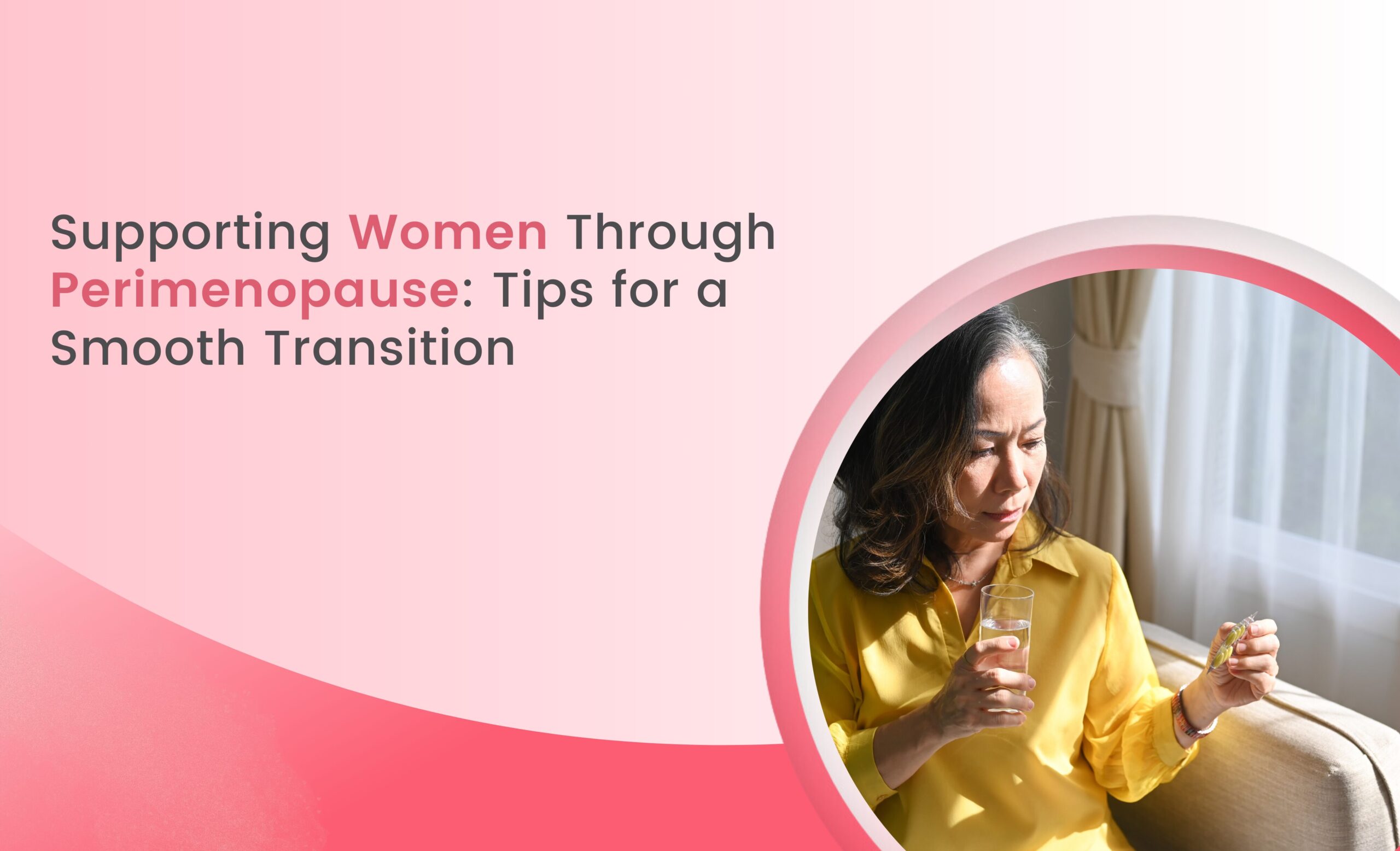
Supporting Women Through Perimenopause: Tips for a Smooth Transition
Perimenopause is a natural phase in a woman’s life that precedes menopause, typically occurring in the late 40s to early 50s. This transition period can bring a variety of physical and emotional changes, and supporting women through it is essential for their well-being. Here are some tips to help navigate perimenopause smoothly.
1. Understanding Perimenopause
a. What is Perimenopause?
Perimenopause is the period leading up to menopause, characterized by hormonal fluctuations, particularly a decrease in estrogen levels. This phase can last several years, culminating in menopause when a woman has gone 12 months without a menstrual period.
b. Common Symptoms
Irregular Periods: Changes in menstrual cycle length, flow, and frequency.
Hot Flashes and Night Sweats: Sudden feelings of heat, often accompanied by sweating.
Sleep Disturbances: Difficulty falling asleep or staying asleep.
Mood Changes: Increased irritability, anxiety, or depression.
Physical Changes: Weight gain, especially around the abdomen, and changes in skin elasticity.
Cognitive Changes: Memory lapses and difficulty concentrating.
2. Medical Support
a. Regular Health Check-ups
Routine visits to a healthcare provider can help monitor symptoms and manage any health issues that arise during perimenopause. Discussing symptoms openly with a doctor can lead to appropriate treatments and interventions.
b. Hormone Replacement Therapy (HRT)
HRT can help alleviate severe symptoms by replacing the hormones that the body is no longer producing. It’s important to discuss the benefits and risks with a healthcare provider to determine if HRT is a suitable option.
c. Non-Hormonal Treatments
For those who cannot or prefer not to use HRT, non-hormonal treatments such as antidepressants, gabapentin, and clonidine can help manage symptoms like hot flashes and mood swings.
3. Lifestyle Adjustments
a. Diet and Nutrition
Balanced Diet: Emphasize a diet rich in fruits, vegetables, whole grains, lean proteins, and healthy fats.
Calcium and Vitamin D: Ensure adequate intake to support bone health, as the risk of osteoporosis increases during perimenopause.
Hydration: Drink plenty of water to stay hydrated and help manage symptoms like bloating and hot flashes.
b. Exercise
Regular physical activity can help manage weight, improve mood, and promote better sleep. Aim for a combination of aerobic exercise, strength training, and flexibility exercises.
c. Sleep Hygiene
Maintaining good sleep hygiene can alleviate sleep disturbances. This includes having a consistent sleep schedule, creating a relaxing bedtime routine, and ensuring a comfortable sleep environment.
4. Emotional and Psychological Support
a. Mental Health Care
Seeking support from a mental health professional can be beneficial for managing mood changes, anxiety, and depression. Therapy and counseling provide a safe space to discuss feelings and develop coping strategies.
b. Support Groups
Joining support groups for women going through perimenopause can provide a sense of community and shared understanding. These groups offer emotional support and practical advice.
c. Mindfulness and Stress Reduction
Practices such as mindfulness, meditation, and yoga can help reduce stress and improve emotional well-being. These techniques encourage relaxation and a focus on the present moment.
5. Self-Care Practices
a. Personal Time
Taking time for oneself is crucial during perimenopause. Engaging in hobbies, relaxing activities, and self-care routines can improve overall well-being and reduce stress.
b. Skin and Hair Care
Hormonal changes can affect skin and hair health. Using gentle skincare products, moisturizing regularly, and protecting the skin from the sun can help maintain healthy skin. Consulting with a dermatologist can provide personalized advice.
c. Sexual Health
Perimenopause can affect sexual health and libido. Open communication with a partner, exploring lubricants and vaginal moisturizers, and consulting with a healthcare provider can help address any concerns.
